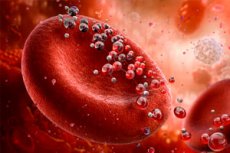New publications
Scientists Discover Key Signal for Artificial Blood Production
Last reviewed: 15.07.2025

All iLive content is medically reviewed or fact checked to ensure as much factual accuracy as possible.
We have strict sourcing guidelines and only link to reputable media sites, academic research institutions and, whenever possible, medically peer reviewed studies. Note that the numbers in parentheses ([1], [2], etc.) are clickable links to these studies.
If you feel that any of our content is inaccurate, out-of-date, or otherwise questionable, please select it and press Ctrl + Enter.

Scientists are one step closer to creating artificial blood: the discovery of a key signal, CXCL12, could make red blood cell production more efficient.
Scientists have been working on artificially producing blood for decades. Now, researchers from the University of Konstanz and Queen Mary University of London have taken a major step forward with a new discovery.
In Germany, around 15,000 units of blood are needed daily, most of which comes from donor sources. Research into alternative methods of obtaining blood, including artificial mass production, has been ongoing for many years, but is still far from widespread use. The main problem lies in the extremely complex and poorly understood mechanisms by which the body naturally produces this vital fluid.
Identification of a key signal for red blood cell formation
Dr Julia Gutjahr, a biologist at the Institute of Cell Biology and Immunology Thurgau at the University of Konstanz, studies the mechanisms of hematopoiesis. Together with colleagues from Queen Mary University of London, she has identified a molecular signal – the chemokine CXCL12 – that triggers the process of expulsion of the nucleus from red blood cell precursors. This is a key step in the development of red blood cells.
"The final stage of the transformation of the erythroblast into a red blood cell is the expulsion of the nucleus. This process is unique to mammals and makes room for hemoglobin, which is involved in the transport of oxygen," explains Gutjahr.
Although the process of maturation of stem cells into red blood cells is almost optimized, it has been unclear until now which factors trigger the expulsion of the nucleus.
"We found that the chemokine CXCL12, which is primarily present in the bone marrow, can initiate this process in combination with a number of other factors. By adding CXCL12 to erythroblasts at the right time, we were able to artificially induce nuclear expulsion," says Gutjahr.
What does this mean for artificial blood production?
This discovery was a scientific breakthrough that could significantly improve the efficiency of artificial blood production in the future. However, further research is still needed.
Since 2023, Gutjahr has been leading his own research groups at the Institute of Cell Biology and Immunology Thurgau and continues to study the role of CXCL12.
“We are now investigating how to use CXCL12 to optimize the artificial production of human red blood cells,” explains Gutjahr.
In addition to practical applications in industrial red blood cell production, the results of the study provide new insights into cellular mechanisms: unlike other cells, which migrate when stimulated by CXCL12, in erythroblasts this signal is transported inside the cell, even into its nucleus. There, it accelerates cell maturation and promotes the expulsion of the nucleus.
"Our study shows for the first time that chemokine receptors act not only on the cell surface but also inside it, opening up completely new perspectives for cell biology," said Professor Antal Roth from Queen Mary University.
Optimizing production for wide application
Today, stem cells remain the most efficient method for producing artificial blood: the expulsion of the nucleus occurs in approximately 80% of cells. But the sources of stem cells are limited (cord blood, donor bone marrow), which makes mass production impossible.
Scientists have recently succeeded in reprogramming different types of cells into stem cells and using them to generate red blood cells. This method provides a nearly unlimited source of cells, but it takes longer and is less effective: only 40% of cells expel their nucleus.
"Our new findings on the key role of CXCL12 give us hope that its use will significantly improve the efficiency of red blood cell production from reprogrammed cells," Gutjahr notes.
If mass production becomes possible, a wide range of applications will emerge: targeted production of rare blood types, elimination of donor blood shortages, and the possibility of recreating a patient's own blood for specialized treatment of various diseases.
The study is published in the journal Science Signaling.
